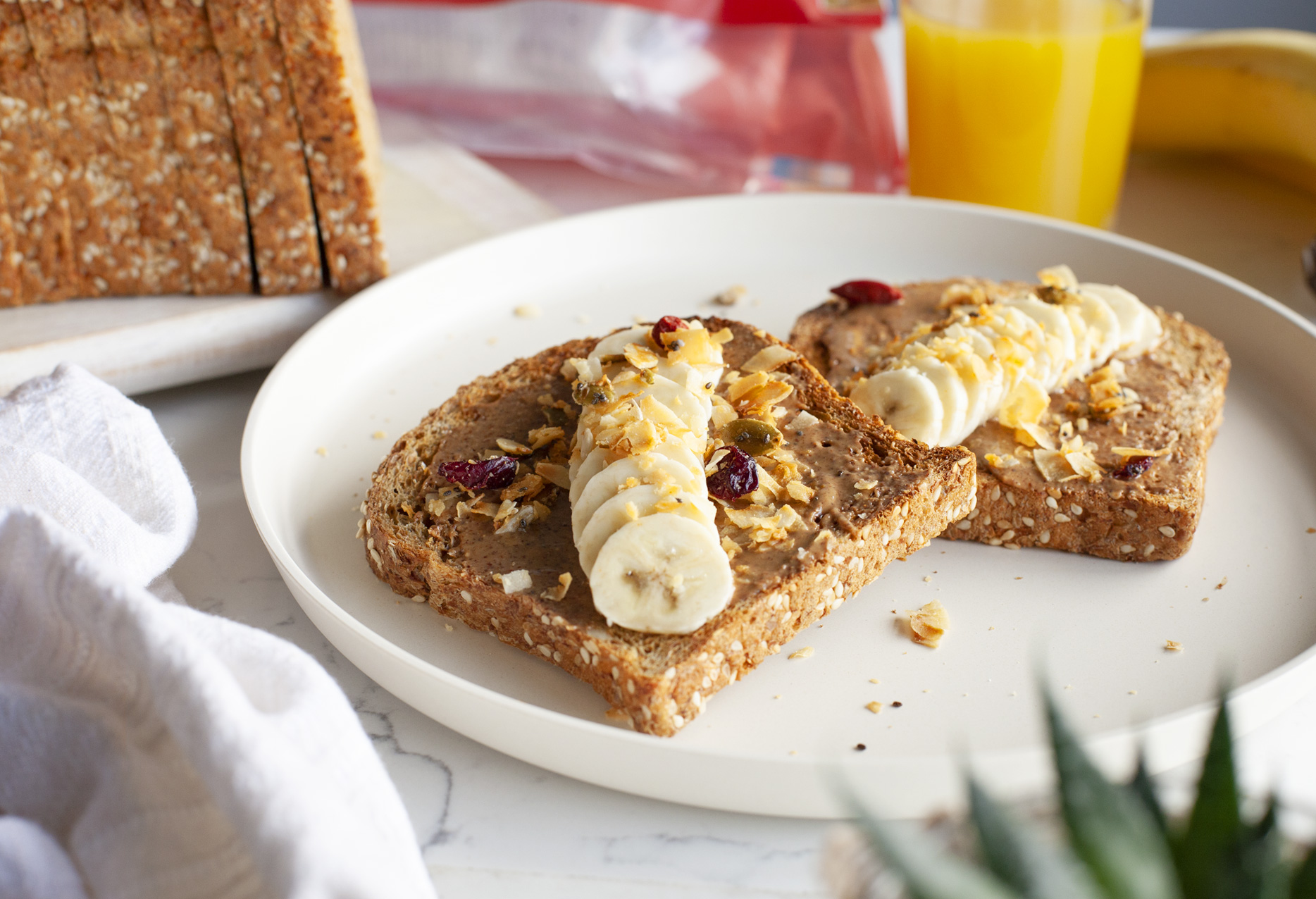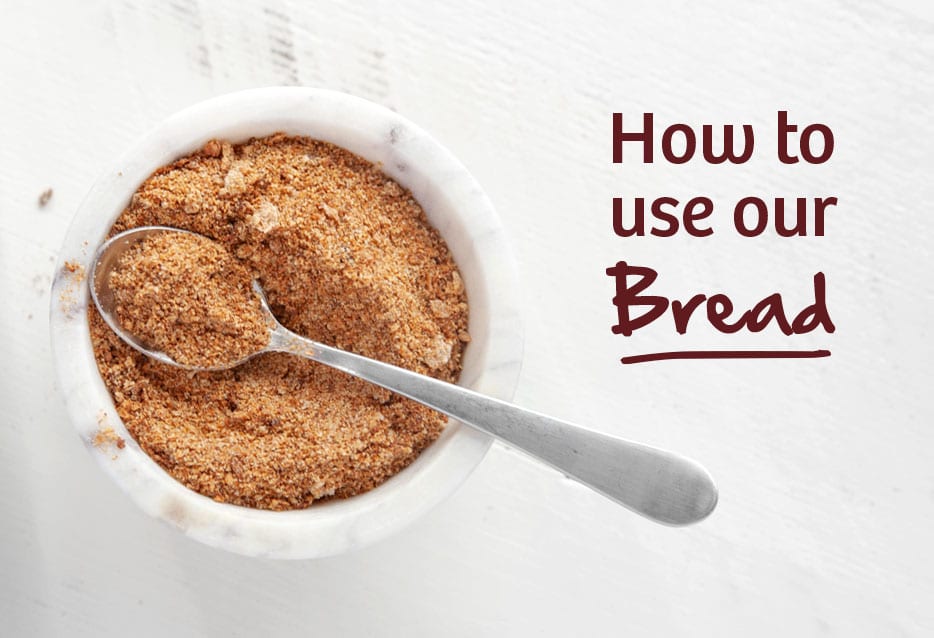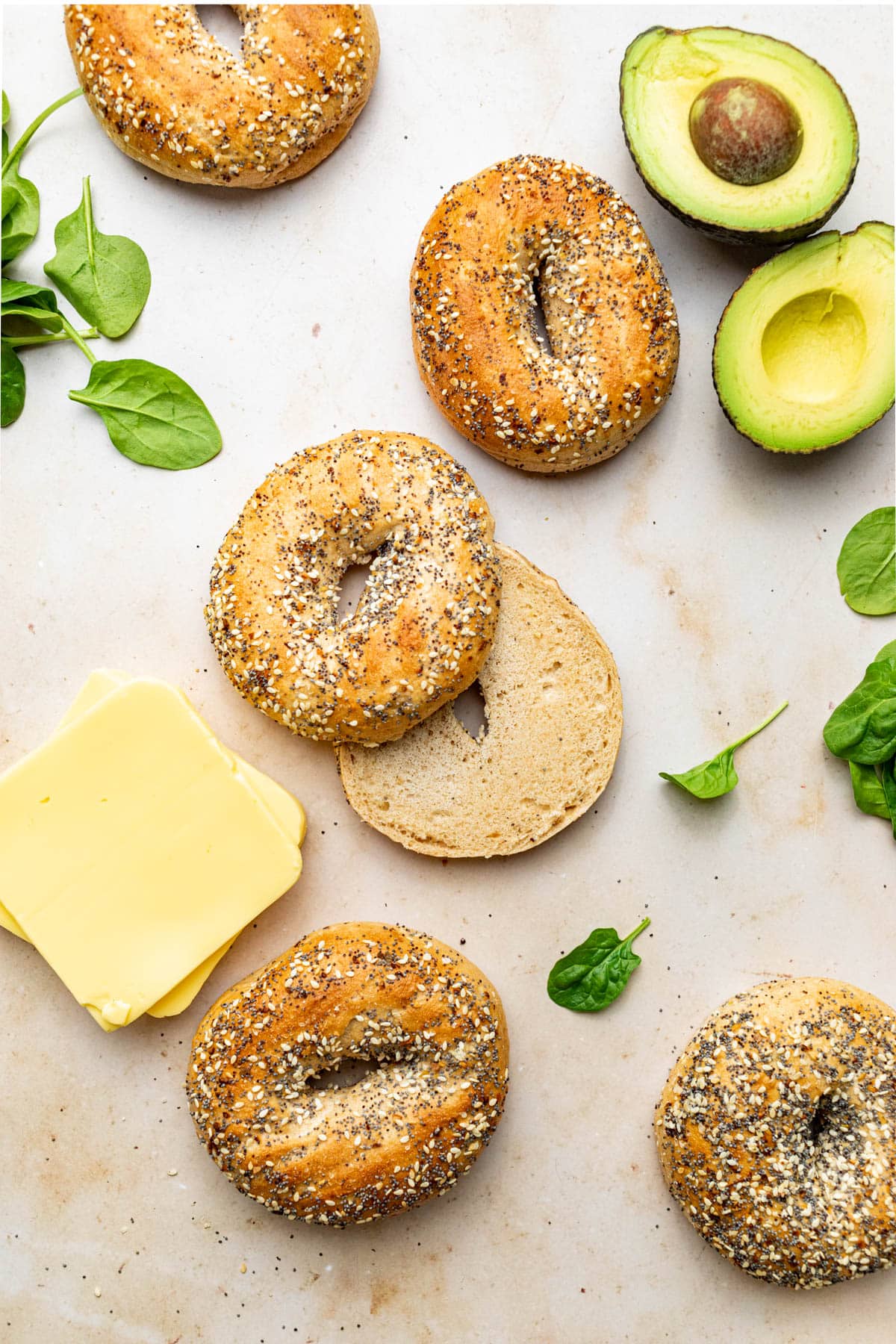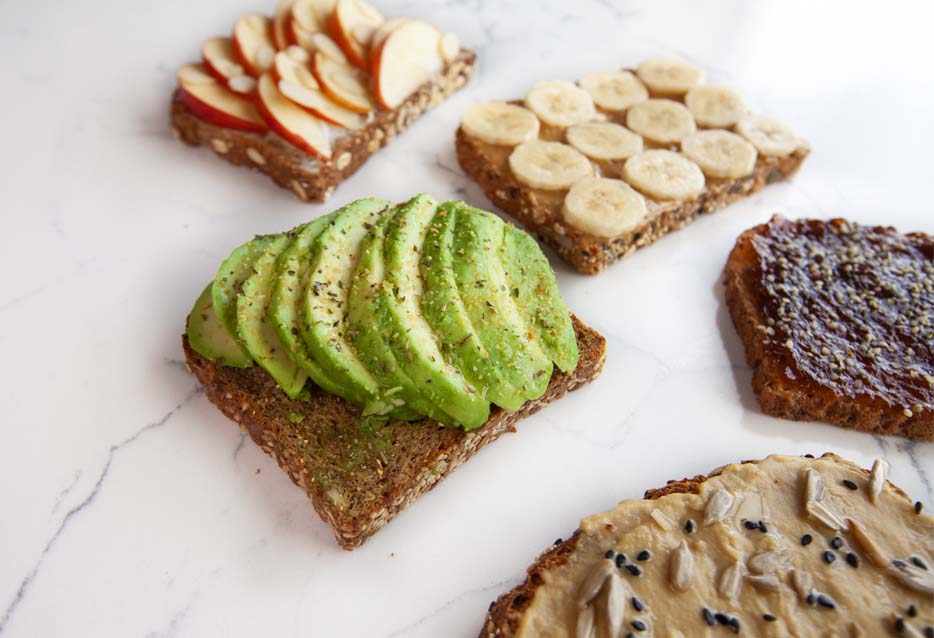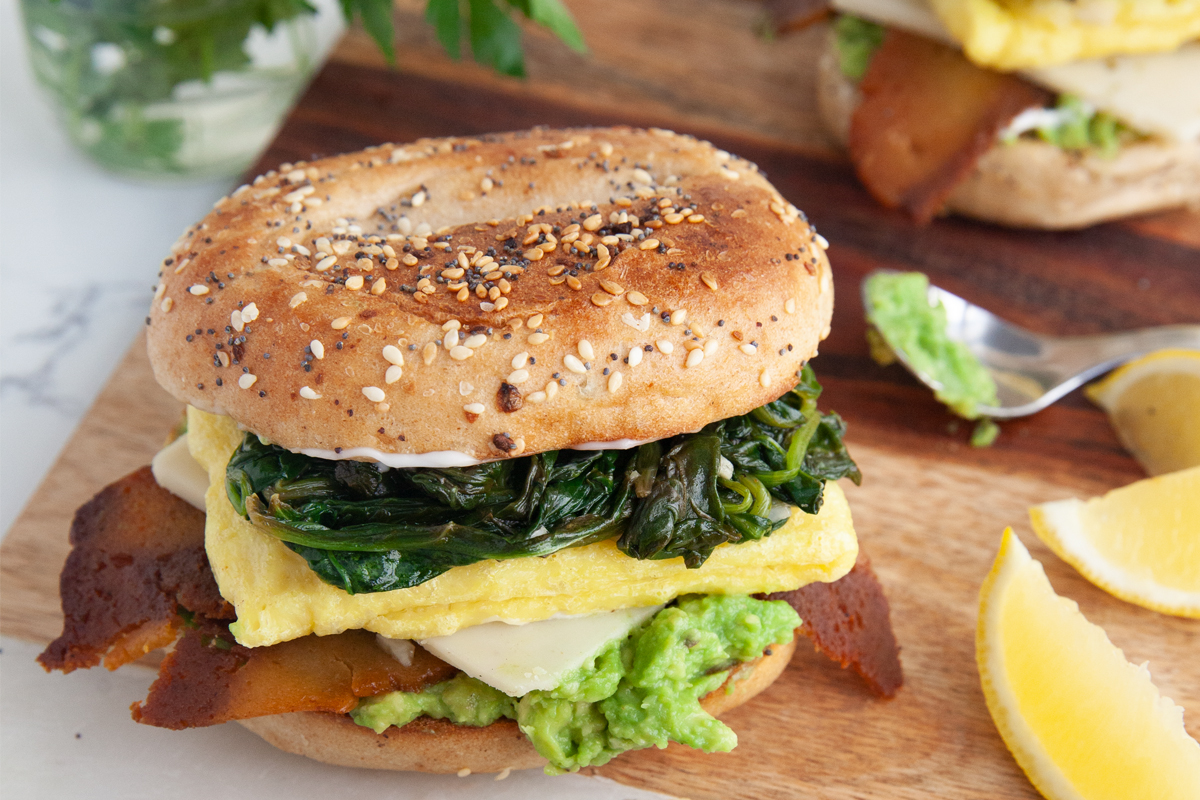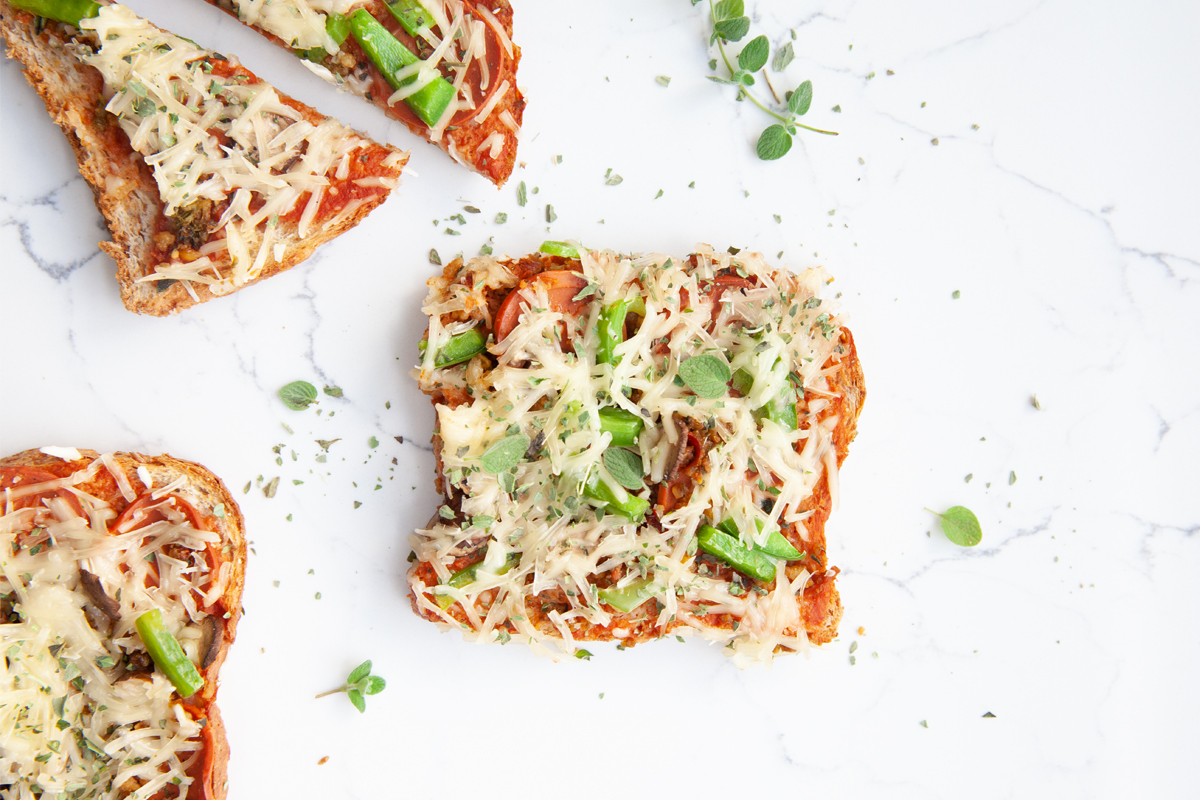Recipe
How to Eat Healthy on a Budget
—Start with Sprouted Bread
Learn how to make easy, healthy, affordable meals for your family. Fast.
January 18, 2022

Healthy eating might not feel as easy or cheap as a fast-food drive-thru. But with a few tips, tricks, and smart choices, you can learn how to eat healthy on a budget. And make easy, healthy, affordable meals for your family. Fast.
With inflation on the rise, eating healthy on a budget can feel like an insurmountable challenge for families. Canada’s Food Price Report for 2022 predicts an increase in food costs of up to 7%1. But healthy budget-friendly family meals don’t have to be hard—or expensive! Start with a simple swap. Switch to sprouted whole grain bread and open up a wholesome world of healthy meal possibilities.
A loaf of sprouted bread may be one of the easiest—and tastiest—changes you can make! But sprouted bread can do so much more than give your favourite sandwich a whole grain upgrade. Countless cheap healthy meals begin with a simple loaf of sprouted bread and a handful of humble, budget-friendly ingredients. Like this Simple Plant-based Tuscan Bread Soup recipe. Or this Easy Make-Ahead Breakfast Casserole. Or a simple and delicious better-for-you french toast.
Beyond the Price-per-Slice:
The True Value of Better-for-You Foods
Although it is often cheaper to buy white bread, the bakery section of your grocery store is a place where you get what you pay for.
Why? Doctors, Registered Dietitians, and public health organizations around the world don’t just recommend whole grains for fun. Whole grains are nutrient-dense and packed with digestion-supporting and heart-healthy fibre. Sprouting makes healthy whole grains even better. Naturally.
With the 15 slices in a $5.50 loaf of Squirrelly Bread, and a handful of fridge and pantry staples, you can make anything from a week of wholesome workday sandwiches for one—to a Healthy Plant-based Breakfast Bowl that satisfies the whole family. (And still have leftovers!)
Investing just a little more in wholesome ingredients like sprouted whole grain bread can do wonders for your family’s health—and surprisingly, your budget too! What makes a better-for-you bread worth an extra dollar or two over the cheapest loaf on the shelf? Satisfied tummies don’t feel the need to snack on unhealthy foods, and the best way to satisfy your family is with healthy, hearty, whole grain ingredients and high-fibre foods2.
Base a meal on a humble healthy loaf and get every last cent of value out of your Silver Hills Bakery sprouted bread. Our easy guide on How to Use the Whole Loaf includes eight recipes to inspire a multitude of meal options!
False Economies:
Food Waste and the Time vs. Money Equation
Saving money on groceries doesn’t always line up with the price tag on the shelf. It makes more financial sense to buy a product you’re more likely to use than one you’re more likely to waste—even if it is a little more expensive. Sound counterintuitive? Read on.
A bunch of carrots, a head of lettuce, or whole butternut squash is almost always the less expensive option at the checkout. But buying cheaper foods that still need prep work (washing, cutting, etc.) isn’t cheaper if finding the time and energy to do that prep work means they wilt in the crisper in spite of your best intentions.
Buying healthy produce you don’t use contributes to food waste—and wasted food isn’t just bad for the environment, it’s bad for your budget too. By all means, if you know you’ll do the prep and enjoy your veggies at their farmers’ market freshest, save your pennies! (And the extra packaging). But if your fridge tends to be a layover for veggies en route to the compost bin, sometimes spending a little more on equally-healthy food you’re more likely to use—like pre-cut butternut squash or boxed salad greens—is the smarter, more budget-friendly choice.
Fresh or Frozen: Which is Healthier?
In addition to whole grains, eating fruits and vegetables plays an important role in preventing disease and maintaining your family’s overall health. While farm-fresh produce is great when you have access to it, most fresh produce arrives at the store several days to weeks after it’s harvested. Depending on the season and the fruit or vegetable, produce may have to be shipped across the world. Along the way, a lot of the nutrition is lost as their freshness declines! Frozen fruits and vegetables are frozen almost immediately after they’re picked, so they keep more of their nutrients—and flavour—for longer3.
And that means frozen fruits and veggies aren’t just convenient time-savers. They also offer as much—or more—nutrition than fresh3.
Frozen fruits and vegetables last longer, meaning you’re less likely to waste unused portions. However, if you do decide to go with fresh fruit and veggies, make sure you’re storing them appropriately to maintain their freshness. You can do this by removing produce from plastics and storing them in cloth or ventilated containers. When you store your fruit and veggies, make sure they’re easily accessible. Any fruit or vegetable stored in the fridge should always be at the front—never at the back. When your produce is front and centre, it’s easy to grab and enjoy—and less likely to go to waste.
To be certain you aren’t unnecessarily wasting food, it’s a good idea to clean out your fridge regularly. Checking to make sure nothing has been accidentally forgotten at the back is a good way to incorporate any unused ingredients into your next dish—before they go bad. This also presents a fun and unique opportunity to get creative in the kitchen. Try a new recipe, food combination, or make your family a small buffet!
How to Eat Healthy on a Budget Trick:
Make Your Own Broth
Freeze any extra veggie scraps you have and use them to make your own Veggie Broth! This will help you get more value out of the food you buy, and lower your amount of food waste—what a combo! If you’re looking for an easy recipe to get you started, try this one:
Healthy Budget-friendly DIY Veggie Scrap Broth
Save money and reduce waste with this delicious DIY Veggie Broth, made from scratch—and scraps. This technique for broth making repurposes vegetable scraps that would otherwise be thrown into the compost bin. Save your vegetable peels and ends and freeze them (be sure to clean them first) until you have enough to make the broth.
Not all veggie scraps are created equal. Only use vegetables with flavours you want to come through in the broth. Here is a list of vegetables that make great homemade veggie broth:
- Onion and shallot skins
- Carrot peels and ends
- Celery ends and leaves
- Sweet potato ends
- Mushroom stems
- Garlic ends and skins
- Green onion or leek ends
- Corn cobs
- Squash and zucchini ends
- Asparagus ends
- Herb stems from dill, thyme, parsley, cilantro, and basil
Your broth will taste different every time depending on the quantity and variety of vegetable scraps you use. This flexible, budget-friendly recipe is also healthier for you than store-bought stock. This is because you are able to control the level of sodium and the quality of vegetables you use.
Scroll down to the end of this article to check out the ingredients and instructions to make this easy recipe for DIY Veggie Broth recipe.
The Power of Plant-Based Nutrition:
Stretch Your Budget with Vegan Protein
Explore a whole new world of flavours, and plant-based alternatives at a more affordable price. A global 2021 study in The Lancet showed that in high-income countries (including Canada and the US), vegan and vegetarian diets that are also high in whole grains are the most cost-effective way to eat compared to the typical benchmark diet, as well as several other healthy eating patterns reviewed4.
Inflation and supply-chain issues have caused an increase in the price of goods in every aisle of the grocery store. However, the cost of plant-based proteins is holding steady (or rising slower) compared to other protein sources. In general, plant-based proteins like beans, lentils, and tofu are simply more affordable and can still nourish and satisfy your family in the same ways that animal proteins can.
Animal-based proteins are usually more expensive than plant-based proteins. Going meatless a few nights a week and cooking with plant-based proteins isn’t just good for the planet and your family’s health—it can also save you money2.
We have lots of healthy, budget-friendly, high-protein plant-based recipes for you and your family. Try our High-Protein Lentil Sloppy Joes or this satisfying White Bean Garlic Hummus with a toasted slice from your favourite Silver Hills Bakery sprouted bread.
Budget-Friendly Meal Prep Tips and
Cheap Healthy Recipes Your Family Will Love
Meal Prep Tips:
- Batch cooking is an easy way to cook large quantities of food at a more affordable price. Being able to save leftovers in your freezer for several months not only makes future meals easier (defrost, reheat, and enjoy) but also allows you to cut down on food waste, and stretch your ingredients (and budget) further.
- For easy make-ahead, freezer-friendly meals, try our Make and Freeze Vegan Meatball Sub Sandwiches or this recipe for Healthy Make-Ahead Breakfast Sandwiches.
Here are some of our favourite, easy-to-make affordable recipes you can make to satisfy your family any day of the week:
Ingredients
- 4 cups frozen vegetable scraps
- 10 cups water
- ¾ tsp salt
Instructions
- Combine veggie scraps, water, and salt in a large pot. Cover and bring to a boil. Once boiling, reduce heat to low and simmer for at least 30 minutes—up to an hour and a half.
- Remove and discard vegetable scraps—either with tongs or by straining the broth.
- Let broth cool to room temperature and store in airtight containers. (Store in the fridge for up to a week, or freeze for up to 6 months).
